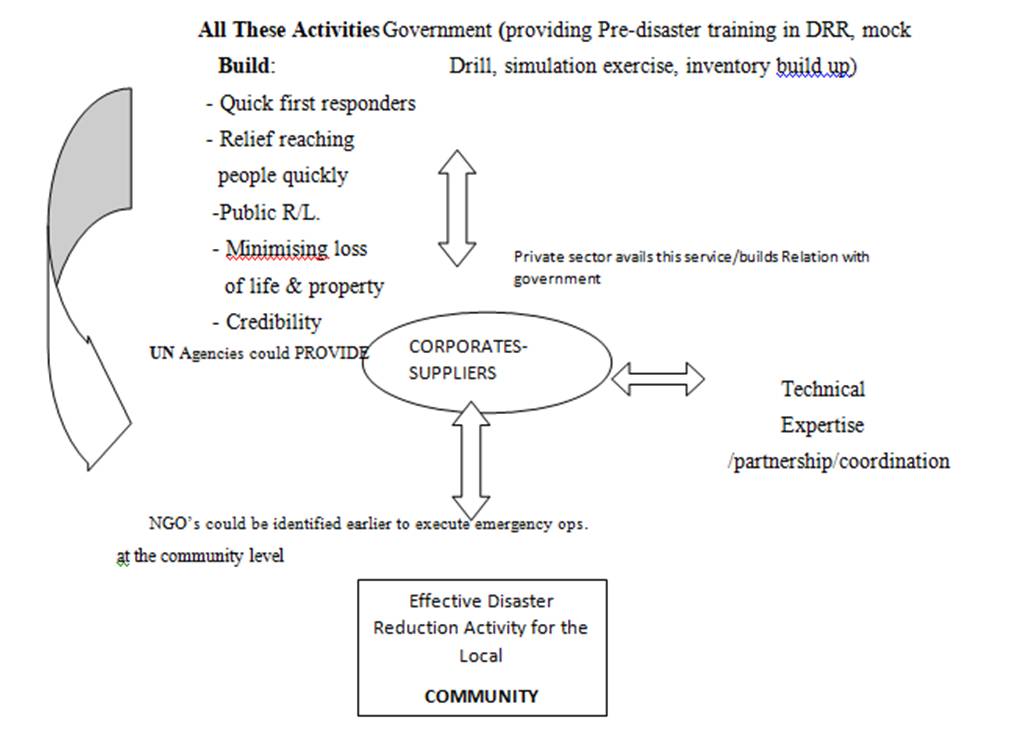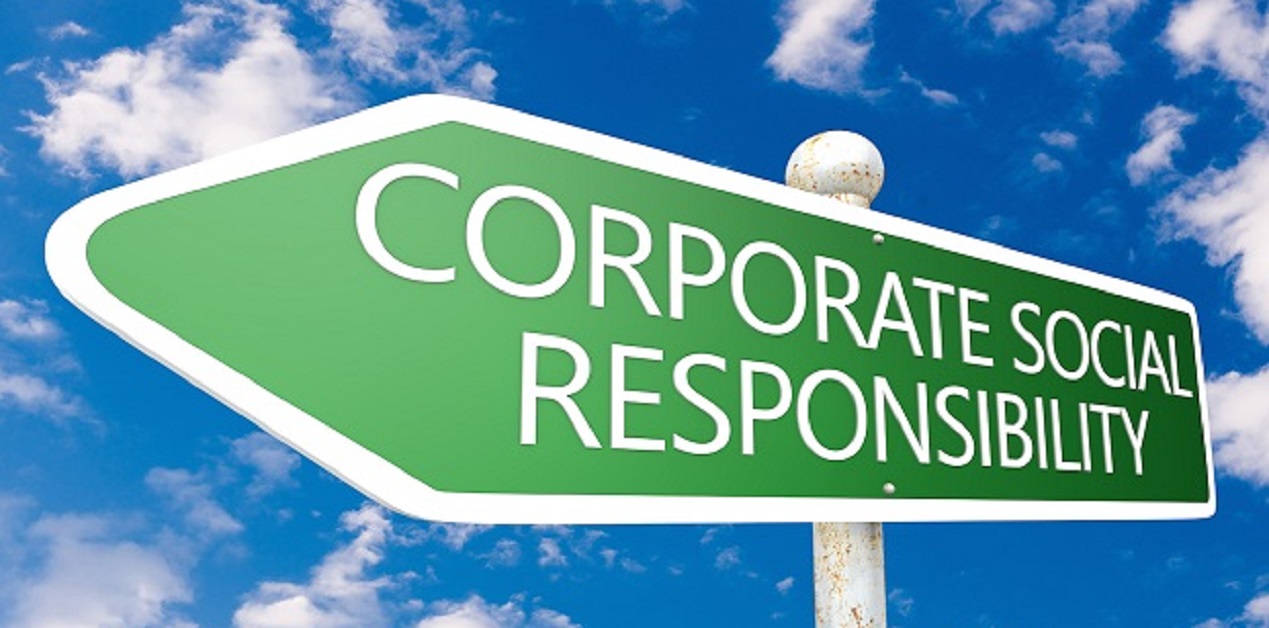Introduction
The Pandemic has re-drawn lines in the entire gamut of the social system wherein concepts like globalization, industrialization, information technology etc, have re-coined themselves. Mankind’s imaginative ideas that had created systems to make life comfortable blurred everything as the world was consumed with the wrath of COVID-19. Mami Mizutori, the UN Secretary-General’s Special Representative for Disaster Risk Reduction, said: “We are willfully destructive. That is the only conclusion one can come to when reviewing disaster events over the last twenty years. COVID-19 is but the latest proof that political and business leaders are yet to tune in to the world around them.”
However, despite the immense impact the world is governed by industrialization that could earn any nation the brand name of “Highly Developed Countries” (HDC) or “Least Developed Countries” (LDC) depending on the level of industries present, automation achieved aside from the increased life expectancy, education level, infant mortality, low population etc. which are also indicators of a developed nation. So, going by these indicators one could easily find out the nations in the world that could be categorized as “HDC” or “LDC”. Arguably, all the above said indicators would put large parts of Europe, Scandinavian Countries, America, parts of Asia under the HDC label, while, the entire South Asia, Africa, and rest of the left out nations would fall under the LDC!
One is reminded of eminent structural-functionalist Talcott Parsons who gave due emphasis on “value consensus” which means society is a well coordinated system governed by the principles of AGIL(A-Adaptation, G-Goal Attainment, I-Integration, L-Pattern Maintenance).To briefly elaborate each of the principles: Adaptation refers to relationship between the system and the environment. In order to survive social systems must have some degree of control over their environment, primarily it is the “economy” which is the institution concerned for this function. Goal Attainment refers to the need for all societies to set goals towards which social activity is directed. This is done by the “government”, which passes law and in its purview comes the regulation of the economy. Integration refers to the adjustment of conflict which is concerned with the coordination and mutual adjustment of the parts of the social system. This is done by the “legal system” which is the judicial system. Finally comes Pattern Maintenance which refers to the maintenance of the basic pattern of values, institutionalized in the society. Institutions which perform this function include the family, educational system and religion. By doing all of this a state of “social equilibrium” is attained and the various parts of the society are in a state of balance.
Case Study
However, when discoveries for “human comfort” like for example an air-conditioner was made, “imagination” could not stretch for the consequences many of the industrial products could have on the environment that could lead to far-reaching impact on the climate and whose direct reality is global warming and the increase in natural disasters.
So, “systems” set-up in the 21st century definitely defeats the Parsonian state of being in “equilibrium” or “balance.” The economy involving corporates manufacture products that have been causing irreversible damage to the environment; the government on the other hand does little to streamline the corporates in the national mainstream for disaster reduction, while the legal systems pass laws which are not sufficiently stringent to prevent environmental damage caused by corporate products. So, the only system which could act as a pressure group is perhaps the educational system, family and religion to inculcate the importance of self preservation by preserving the environment. The entire “system” seems to be in chaos! Today every aspect of life is governed by corporate products, for example a packet of wafers has serious implications as the chemical dyes used in the packet are highly detrimental for the environment, and similarly the bone china enameled crockery is supposed to be carcinogenic owing to the presence of lead pigment in the glaze.
If one briefly examines the impact industrial products have on environment, it could probably save mankind from further destruction. For example the coolant CFC (Chlorofluorocarbon-now restricted for use under the Montreal Protocol in many countries) is primarily used in refrigerators and air-conditioners across the world. It was later on realized the impact CFC had on the environment in the form of “ozone depletion.” The question that arises is though industries manufacture products with a profit-making motive it is unable to realize that with threatening environmental issues it not only raises questions on “business continuity” but, also the survival of mankind itself!
Despite having constitutional amendments on Disaster Management in almost every country in the world, it seems corporates, governments, community are going in parallel direction! The “Highly Industrialised Nations” and the world’s biggest corporate houses get most of their raw materials from the “Least Industrialised Nations” which means they have a strong supplier chain all over the world. But, the irony is neither is the supply chain trained nor activated to respond to emergency situations in the world. To add to the woes of the Least Industrialised Nations the waste or garbage of the Highly Industrialised Nations are dumped in the third world countries making the population vulnerable to health hazards, and adding to environmental degradation. This attitude has put the world in throes of an environmental crisis impacting globally. After all, it is the big corporates located in the industrialized nations that manufacture products which regularly abuse the environment, and the very same corporates have a strong supply chain in third world countries. In other words, raw materials are primarily brought from the developing countries for the big brands of Europe, America or any other developed nation.
But, the wrath of nature and more recently the ongoing pandemic knows no “geographical boundaries” it strikes with fury and in a matter of few hours flattens all indicators of development as was seen in Hurricane Katrina. In Europe for instance environmental laws called “REACH” are made to protect itself from environmental degradation. REACH calls for a ban on chemicals entering Europe that could harm their environment. What is forgotten is environment is not geographically insulated from any continent. In other words, no matter in any part of the continent anything that is manufactured has an environmental implication world-wide, and today one can see the global warming to be a reality. In India, the recent floods in Bihar, took the entire administration by surprise as the river Kosi had changed its course and flooded an area which has never been known to be flood prone. The Sendai Framework and the UN SDG’s together call for “Sustainable Development” on every Human Development indictor, the key to its success lies in its “Sustainability”
The corporate sector has the advantage of being organized with a supply chain network spread in many parts of the world and country. In the times of economic crises the world is faced with the problem of using its resources wisely as “natural/or any type of disasters” cannot be prevented but, they could be handled to minimize losses of life, property, business. Since most of the suppliers are located at various parts of the world they could be given pre-disaster training so as to equip them in whatever way they could contribute toward disaster reduction. To further explain, if for instance IKEA has its supply chain in most continents, the organisation could decide what kind of service it could provide both pre-disaster & post disaster. For example, if a natural disaster strikes in Africa and IKEA has suppliers in that particular country it could activate its supplier by deciding on the type of relief material in line with their business continuity. This would bring in a win –win situation for all stakeholders which includes Government, UN Agencies, Suppliers, and finally the community.
OPERATIONALISING SUPPLY CHAIN RESPONSE OF CORPORATES IN CRISIS

The above mentioned Supply Chain response could be easily operational provided any corporate sector is committed towards its social responsibility or responsible business. Business without social responsibility is not sustainable as it not only harms the environment but the consumers which comprise the community itself and finally the business itself. Essentially, all the stakeholders need to be pro-actively involved in the process of disaster mitigation activity at the pre-disaster stage and post-disaster stage. The “Suppliers” could receive Disaster Reduction training from the government authority as in every country it is the government which normally provides such facility for example Federal Emergency Management Agency (FEMA) in USA or National Disaster Management Authority (NDMA)/ National Institute of Disaster Management (NIDM) in India, by getting involved in the pre-disaster mitigation activity not only the supplier but the major corporate also gets the credibility of having socially responsible business thereby winning the confidence of the government.
Since the Supplier is at the local level the employees of that particular county or town or village are automatically involved in the training thus equipping the community with adequate training to handle any crises situation, who could act as “first responders” in the event of a disaster. The UN agency on the other hand could be involved for providing partnership, training and coordination as they operate at the grass root level. Moreover, with UN involvement many a governmental hurdles could be handled for the corporates who want to be give relief items. Finally, the civil society at the local level could be both identified earlier and later involved for carrying out response activities in the event of any disaster. In brief all the stakeholders are in a win-win situation, and play in each other’s strength.
Conclusion
As mentioned above, despite categorizations between rich nations and poor nations, industrialized and semi-industrialised, all of them are tied in a single thread of reality which is global warming that has been contributed by human activities and the consequence of often occurring natural disasters. No longer could products be manufactured, industrial wastes dumped in the river sources thinking it would not affect directly to mankind. The consequences have begun to show remarkably fast. In the period 2000 to 2019, there were 7,348 major recorded disaster events claiming 1.23 million lives, affecting 4.2 billion people (many on more than one occasion) resulting in approximately US$2.97 trillion in global economic losses. (Source: UN Report, October 13,2020)
To conclude, aside from the natural disaster that would anyway continue the pandemic has accentuated the need to practice the Parsonian philosophy of maintaining “equilibrium” amongst the system for not only environmental preservation but for a better quality of life, by indulging in responsible business and coordination between all the stakeholders so that not only response to crises situation occurs on time but, also the losses towards life and property are minimized with adequate pre-disaster training and having an universal approach towards environmental protection for the entire world.
References:
- Parsons, Talcott: “The Social System”, Published : Routledge & Kegan Paul Ltd.,1951,England
- Turner, Jonathan H: “The structure of sociological theory”, Homewood,1974 Illinois: Dorsey
Press - Turner,H,Jonathan: “Theoretical Sociology” 1830 to the present:University of California,2012Sage Publications.
- Websites: www.undrr.org
- www.GAR/undrr.org
(The paper is the author’s individual scholastic articulation. The author certifies that the article/paper is original in content, unpublished and it has not been submitted for publication/web upload elsewhere, and that the facts and figures quoted are duly referenced, as needed, and are believed to be correct). (The paper does not necessarily represent the organisational stance... More >>
Image Source: https://www.latestlaws.com/media/2018/08/Corporate-Social-Responsibility-CSR.jpg











Post new comment